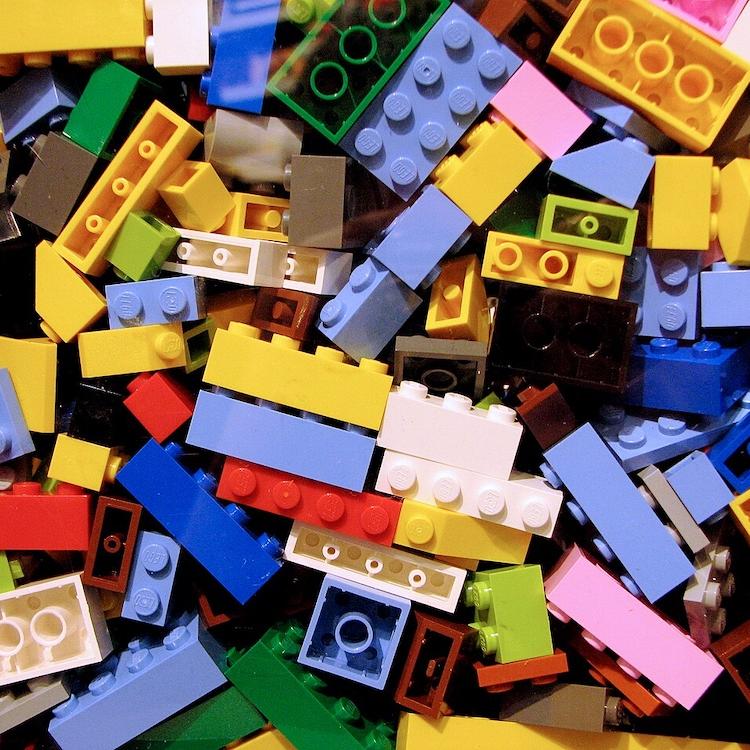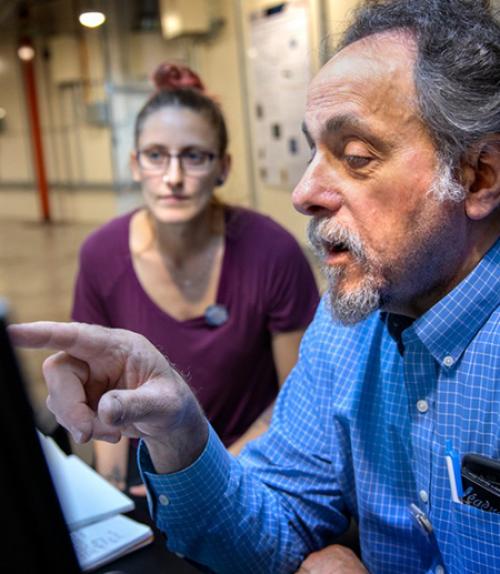The Cornell High Energy Synchrotron Source, more commonly known as CHESS, entered a new era April 1.
A national research facility that annually attracts more than 1,200 users – who conduct X-ray analysis and collect data for research in materials, biomedical and other science fields – CHESS has been funded exclusively by the National Science Foundation since its commissioning in 1980. That changed in April, with Cornell transitioning to a new funding model in which multiple partners will steward facilities at CHESS.
The NSF remains the largest of these contributing partners, and the science agency on July 18 announced that it will provide $54 million in federal funding over the next five years for a research and education subfacility at Wilson Laboratory, the home of CHESS.
The NSF funding will be provided by its Division of Materials Research, the Directorate of Biology and the Directorate of Engineering.
The newly funded NSF portion of the facility will be known as the Center for High-Energy X-ray Sciences at CHESS (CHEXS @ CHESS), and will include four beamlines and staff to support high-energy X-ray science user operations, X-ray technology research and development, and CHEXS leadership. In addition to research, CHEXS will support education and training, particularly of researchers in biological sciences, engineering and materials research.
“The renewal of NSF funding for CHESS will ensure America and Cornell University remain at the the cutting edge of innovation in high-energy X-ray applications,” said Senate Minority Leader Charles Schumer, D-N.Y. “CHESS is a unique training ground for the scientific workforce we need to keep the U.S. competitive, and is part of the lifeblood of our scientific community, enabling researchers to make advancements in everything from clean energy technologies to stronger, more resilient infrastructure. I have been proud to fight and deliver funding to support CHESS and the NSF, and will continue to do so.”
“CHESS is a groundbreaking facility that provides world-class scientific research to upstate New York and the nation, including our military,” said Sen. Kirstin Gillibrand, D-N.Y., ranking member of the Senate Armed Services Personnel Subcommittee. “This federal funding will be used to support the Center for High-Energy X-ray Sciences, which will advance the state’s research and high-tech manufacturing sectors. CHESS continues to be a leader in upstate New York’s innovation economy.”
“By supporting CHEXS, NSF is furthering new, unique, experimental capabilities for emerging research in materials, engineering and biology,” said Guebre X. Tessema, NSF materials research program director. “The new funding model unleashes a reinvented CHESS to pursue new partnerships with other federal agencies, universities and industry.”
“We are always excited to continue our relationship with the NSF,” said Joel Brock, CHESS director and professor of applied and engineering physics. Physics associate professor Carl Franck is a co-principal investigator on the project. CHESS’s most recent grant renewal from the NSF came in 2014.
“This support goes a long way in already securing funding from additional partners,” Brock said, “and ensures that this vital X-ray facility will remain productive into the future.”
On June 4, CHESS held its annual users’ meeting, where Brock and Tessema toured the CHEXS research facility, showcasing the expansive space available to researchers.
CHESS recently completed a $15 million upgrade, solidifying the lab’s standing as a world-leading X-ray source. Earlier this year, Lt. Gov. Kathy Hochul came to CHESS to celebrate the successful completion of the upgrade, which was funded by New York state. This project improved the infrastructure of the storage ring and CHESS’s X-ray beamlines, while also creating jobs by helping to expand the advanced manufacturing sector of central New York.
After the installation of new undulator sources in all of its X-ray beamlines, CHESS is now considered a true third-generation (state-of-the-art) light source, and is equipped for studies of materials at the macroscopic level.
With the recent upgrade and CHEXS’s new five-year cooperative agreement from the NSF, the lab is taking the opportunity to engineer a major transition in its funding model and organizational structure.
For more than 30 years, the NSF has been the sole steward of CHESS, providing the funding needed to operate the large facility. CHESS will now transition from sole stewardship by the NSF as a national user facility and into a partner-funded laboratory.
According to Brock, this funding reconfiguration presents a rare opportunity to redistribute the nation’s synchrotron resources among research communities.
“Diverse groups including plant biology, structural materials and advanced manufacturing are eager to utilize a much larger fraction of the nation’s available synchrotron resources,” said Brock. “Using X-rays is a highly desirable technique that can transform your research, and this new NSF funding will help us reach a wider user base.”
While CHESS attracts in excess of 1,200 users from around the world to perform research at the facility, roughly half of the submitted research proposals are denied due to a lack of beamtime availability. By diversifying the funding sources, CHESS hopes also to diversify and expand the research of the lab.
“Since the facility owns the equipment, the responsibility for beamlines can be reassigned among the funding partners quickly without having to transfer assets,” Brock said. “By enabling partners like the NSF to align their support with evolving research needs, CHESS is able to offer its new partners access to the synchrotron radiation facility more rapidly.”
While other partners contribute money for research at the X-ray facility, the NSF will remain CHESS’s largest funding member of these partner organizations. This allows researchers to focus on using the high-flux X-rays at CHESS that are optimized for time-resolved, high-energy applications. These types of X-rays are ideal for researching quantum materials, fuel cells and high-pressure biological processes.
While other synchrotron laboratories are traditionally located at national labs, Cornell is the only U.S. university still operating a large accelerator complex. The university graduates roughly 20 percent of the nation’s Ph.D.s trained in accelerator science and advanced X-ray technology, and approximately 60 undergraduates participate in CHESS laboratory research every year.
Rick Ryan is a science communicator for the Cornell Laboratory for Accelerator-Based Science and Education.






